|
 |
Hi(gh)!
After a hint from Christoph Lipka, I solved my problem of constraining
an image_map to a certain geographical region of a sphere:
// begin of code
pigment
{
image_map
{
concat(path, tilename, ".png")
interpolate 3
once
}
scale <1/360, 1/180, 1>
translate <(180+longstart)/360, (90+(latstart-1))/180, 0>
warp
{
spherical
orientation z
dist_exp 0
}
rotate <0, 90, 0>
}
// end of code
Went fine, as you see in the first image attached here... but then I
tried to convert it into a function usable for an isosurface and futher
transform it as in the demo script on Christoph Hormann's "Imagico"
Earth view pages:
// begin of code
#declare fn_GeoTile=
function
{
pigment
{
image_map
{
concat(path, tilename, ".png")
interpolate 3
once
}
scale <1/360, 1/180, 1>
translate <(180+longstart)/360, (90+(latstart-1))/180, 0>
warp
{
spherical
orientation z
dist_exp 0
}
rotate <0, 90, 0>
}
}
#local fn_DEM_Height=function { (fn_GeoTile(x, y, 0).red - 0.5)*2 *
32.767 }
#local fn_Shape=function { f_sphere(x, y, z, rd) }
#local fn_Pattern=
function { fn_DEM_Height(1-(f_th(x,z,y)+pi)/(2*pi), f_ph(x,-z,y)/pi,
0) }
// #local fn_Iso=function { fn_Shape(x,y,z)-fn_Pattern(x,y,z)/rd }
#local fn_Iso=function { fn_Shape(x,y,z)-fn_DEM_Height(x,y,z)/rd }
#declare Earth_Slice=
/* sphere
{
0, rd
texture
{
pigment { P_GeoTile }
finish { ambient 0.1 diffuse 1 brilliance 0.4 }
}
} */
isosurface{
function { fn_Iso(x,y,z) }
max_gradient 1.2
accuracy 0.001
contained_by{ sphere{ Earth_Pos, rd+9000 } }
texture
{
pigment { color rgb <0.95, 0.9, 0.7> }
finish { ambient 0.1 diffuse 1 brilliance 0.4 }
}
hollow
}
// end
Note: rd is an overall scaling factor which I set to 1, so keeping it or
leaving it out would not make any difference.
All I ever got is a featureless surface (attached image: view from
10,000 metres altitude), when viewed from much higher altitude, the
terminator shows hints of some relief (grainy shadows), but spread over
the entire globe rather than constrained to a one square degree area...
The heightfield generated from the original ASTER DEM data is 3600 x
3600 pixels and thus too large to be posted here.
See you in Khyberspace!
Yadgar
Post a reply to this message
Attachments:
Download 'scene.png' (4 KB)
Preview of image 'scene.png'

|
 |
|
 |
Hi(gh)!
On 23.07.2013 10:08, Thomas de Groot wrote:
> I don't know if this may help you, but look at the (off-line) Docs
> section "2.3.3.3.9 Transformations on functions" in the isosurface
> paragraph. In the Wiki, this is:
>
>
http://wiki.povray.org/content/Documentation:Tutorial_Section_3.2#Transformations_on_functions
>
>
> Especially rotation of functions are a particular case.
No, this is probably not the problem, as the rotate <0, 90, 0> is still
stated within the pigment brackets, not on the function level! And just
the pigment as geographically constrained surface texture worked as
intended... so why I should not be able to create an isosurface from
such a pigment after having turned it into a function?
See you in Khyberspace!
Yadgar
Now playing: Let's Face the Music (Taco)
Post a reply to this message
|
 |
|
 |
> No, this is probably not the problem, as the rotate <0, 90, 0> is still
> stated within the pigment brackets, not on the function level! And just
> the pigment as geographically constrained surface texture worked as
> intended... so why I should not be able to create an isosurface from
> such a pigment after having turned it into a function?
No, it seems not to be indeed. I played a bit with the problem, trying
out different settings, but I got no result either. Sorry, this is
beyond me apparently...
Thomas
Post a reply to this message
|
 |




![]()